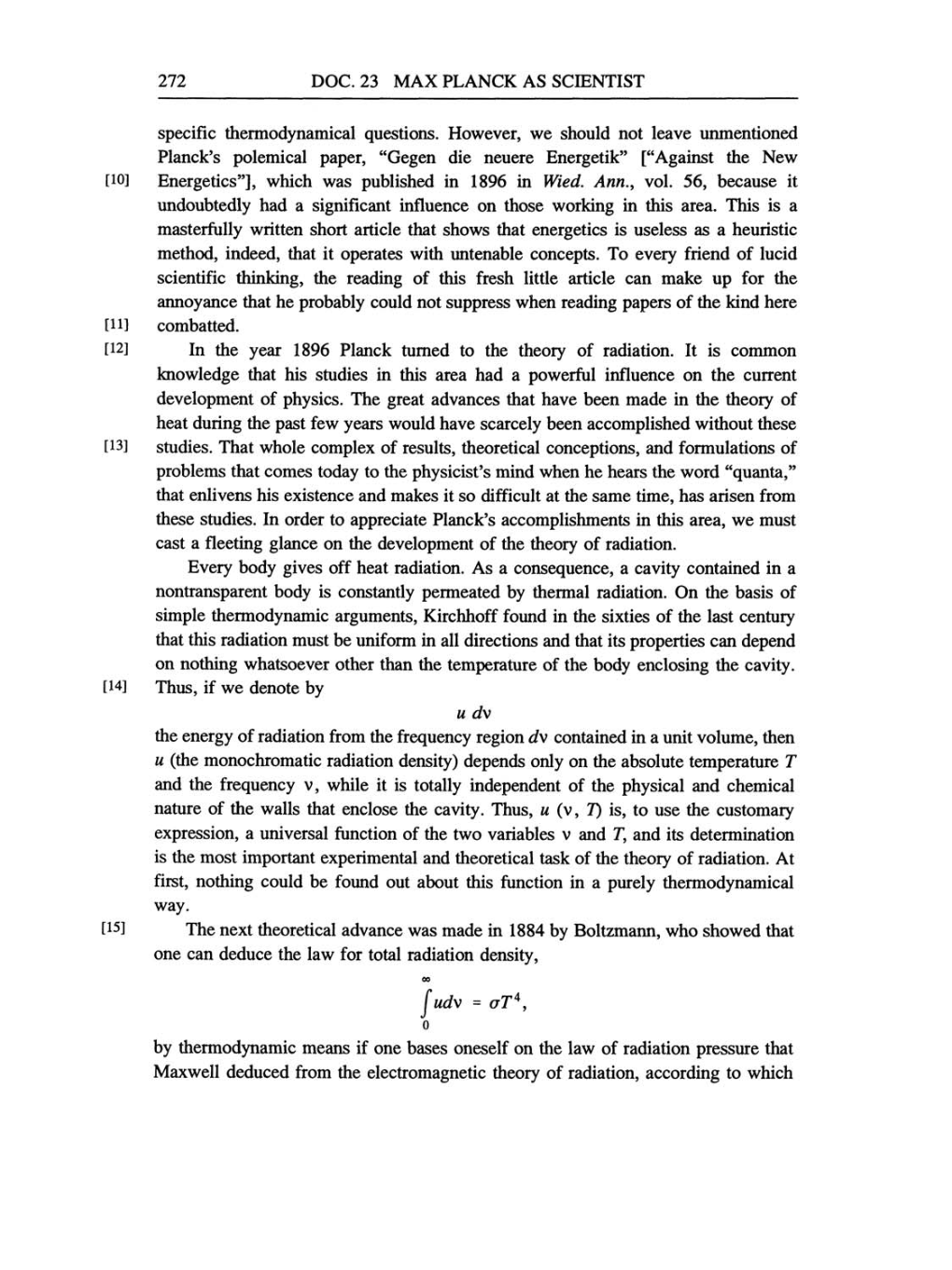272 DOC.
23
MAX PLANCK AS SCIENTIST
specific thermodynamical questions.
However,
we
should
not
leave
unmentioned
Planck's
polemical paper,
"Gegen
die
neuere Energetik" ["Against
the New
Energetics"],
which
was
published
in 1896
in
Wied.
Ann.,
vol.
56,
because it
undoubtedly
had
a
significant
influence
on
those
working
in this
area.
This is
a
masterfully
written short article that shows that
energetics
is useless
as a
heuristic
method, indeed,
that it
operates
with untenable
concepts.
To
every
friend
of
lucid
scientific
thinking,
the
reading
of this fresh little article
can
make
up
for the
annoyance
that he
probably
could
not
suppress
when
reading papers
of
the kind here
combatted.
In the
year
1896
Planck turned
to
the
theory
of radiation. It is
common
knowledge
that his
studies in this
area
had
a
powerful
influence
on
the current
development
of
physics.
The
great
advances that have been made in the
theory
of
heat
during
the
past
few
years
would have
scarcely
been
accomplished
without these
studies. That whole
complex
of
results,
theoretical
conceptions,
and formulations of
problems
that
comes
today
to
the
physicist's
mind when he hears the word
"quanta,"
that enlivens his existence and makes it
so
difficult
at
the
same
time,
has arisen from
these studies. In
order
to
appreciate
Planck's
accomplishments
in this
area,
we
must
cast
a
fleeting glance
on
the
development
of the
theory
of
radiation.
Every body gives
off heat radiation. As
a
consequence,
a
cavity
contained in
a
nontransparent body
is
constantly permeated by
thermal radiation. On the basis of
simple thermodynamic arguments,
Kirchhoff found in the sixties
of the last
century
that this radiation
must
be uniform in all directions and that its
properties
can
depend
on
nothing
whatsoever other
than the
temperature
of the
body enclosing
the
cavity.
Thus,
if
we
denote
by
u
dv
the
energy
of
radiation from
the
frequency region
dv contained in
a
unit
volume,
then
u (the
monochromatic radiation
density) depends only
on
the absolute
temperature
T
and the
frequency
v,
while it is
totally independent
of
the
physical
and chemical
nature
of the
walls that enclose the
cavity.
Thus,
u
(v,
T)
is,
to
use
the
customary
expression,
a
universal
function of the
two
variables
v
and
T,
and
its
determination
is
the
most
important
experimental
and
theoretical task
of the
theory
of radiation. At
first,
nothing
could be found
out
about this function in
a
purely thermodynamical
way.
The
next
theoretical advance
was
made in
1884
by
Boltzmann,
who showed that
one can
deduce the law for total radiation
density,
oof0
udv
=
oT4
,
by thermodynamic means
if
one
bases oneself
on
the law of radiation
pressure
that
Maxwell deduced from the
electromagnetic theory
of
radiation, according
to which
[10]
[11]
[12]
[13]
[14]
[15]
